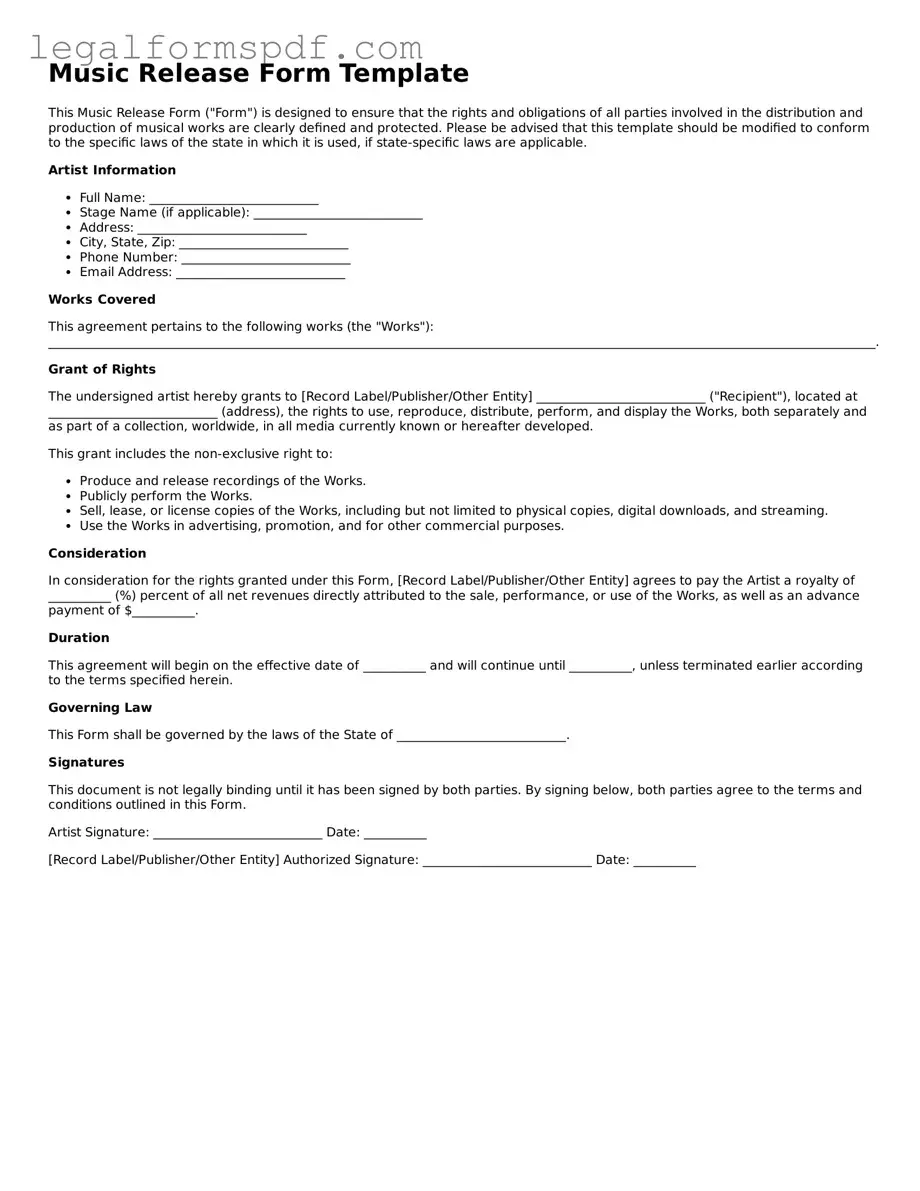Music Release Form Template
This Music Release Form ("Form") is designed to ensure that the rights and obligations of all parties involved in the distribution and production of musical works are clearly defined and protected. Please be advised that this template should be modified to conform to the specific laws of the state in which it is used, if state-specific laws are applicable.
Artist Information
- Full Name: ___________________________
- Stage Name (if applicable): ___________________________
- Address: ___________________________
- City, State, Zip: ___________________________
- Phone Number: ___________________________
- Email Address: ___________________________
Works Covered
This agreement pertains to the following works (the "Works"): ____________________________________________________________________________________________________________________________________.
Grant of Rights
The undersigned artist hereby grants to [Record Label/Publisher/Other Entity] ___________________________ ("Recipient"), located at ___________________________ (address), the rights to use, reproduce, distribute, perform, and display the Works, both separately and as part of a collection, worldwide, in all media currently known or hereafter developed.
This grant includes the non-exclusive right to:
- Produce and release recordings of the Works.
- Publicly perform the Works.
- Sell, lease, or license copies of the Works, including but not limited to physical copies, digital downloads, and streaming.
- Use the Works in advertising, promotion, and for other commercial purposes.
Consideration
In consideration for the rights granted under this Form, [Record Label/Publisher/Other Entity] agrees to pay the Artist a royalty of __________ (%) percent of all net revenues directly attributed to the sale, performance, or use of the Works, as well as an advance payment of $__________.
Duration
This agreement will begin on the effective date of __________ and will continue until __________, unless terminated earlier according to the terms specified herein.
Governing Law
This Form shall be governed by the laws of the State of ___________________________.
Signatures
This document is not legally binding until it has been signed by both parties. By signing below, both parties agree to the terms and conditions outlined in this Form.
Artist Signature: ___________________________ Date: __________
[Record Label/Publisher/Other Entity] Authorized Signature: ___________________________ Date: __________
